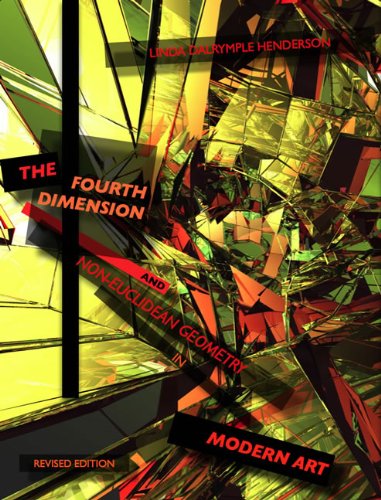

Most ebook files are in PDF format, so you can easily read them using various software such as Foxit Reader or directly on the Google Chrome browser.
Some ebook files are released by publishers in other formats such as .awz, .mobi, .epub, .fb2, etc. You may need to install specific software to read these formats on mobile/PC, such as Calibre.
Please read the tutorial at this link. https://ebooknice.com/page/post?id=faq
We offer FREE conversion to the popular formats you request; however, this may take some time. Therefore, right after payment, please email us, and we will try to provide the service as quickly as possible.
For some exceptional file formats or broken links (if any), please refrain from opening any disputes. Instead, email us first, and we will try to assist within a maximum of 6 hours.
EbookNice Team

Status:
Available4.6
20 reviewsThe long-awaited new edition of a groundbreaking work on the impact of alternative concepts of space on modern art.
In this groundbreaking study, first published in 1983 and unavailable for over a decade, Linda Dalrymple Henderson demonstrates that two concepts of space beyond immediate perception―the curved spaces of non-Euclidean geometry and, most important, a higher, fourth dimension of space―were central to the development of modern art. The possibility of a spatial fourth dimension suggested that our world might be merely a shadow or section of a higher dimensional existence. That iconoclastic idea encouraged radical innovation by a variety of early twentieth-century artists, ranging from French Cubists, Italian Futurists, and Marcel Duchamp, to Max Weber, Kazimir Malevich, and the artists of De Stijl and Surrealism.
In an extensive new Reintroduction, Henderson surveys the impact of interest in higher dimensions of space in art and culture from the 1950s to 2000. Although largely eclipsed by relativity theory beginning in the 1920s, the spatial fourth dimension experienced a resurgence during the later 1950s and 1960s. In a remarkable turn of events, it has returned as an important theme in contemporary culture in the wake of the emergence in the 1980s of both string theory in physics (with its ten- or eleven-dimensional universes) and computer graphics. Henderson demonstrates the importance of this new conception of space for figures ranging from Buckminster Fuller, Robert Smithson, and the Park Place Gallery group in the 1960s to Tony Robbin and digital architect Marcos Novak.